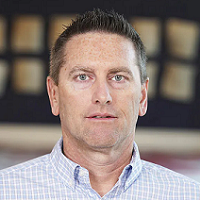 By Mike Hodge, Director Business Development, Alternate Care Solutions, Dräger
By Mike Hodge, Director Business Development, Alternate Care Solutions, Dräger
Twitter: @DraegerNews
Often a patient’s healthcare journey doesn’t end at discharge from the hospital. Moreover, medically complex patients require long term acute care (LTAC) outside of the hospital setting. The COVID-19 pandemic has escalated this need in two ways: Hospitals that are moving patients with other conditions to LTACs to make room for COVID-19 patients, and others that have run out of room for COVID-19 patients and need LTACs to care for patients suffering both short-and long-term impacts of the virus.
Transitioning a critically ill patient from the intensive care unit (ICU) to a LTAC facility without impacting the patient’s health status is a considerable challenge. Here are four questions that LTAC administrators should ask themselves when determining whether their facilities are equipped to meet the needs of higher acuity patients.
1. Are the equipment and supplies in my LTAC capable of supporting the patient acuity level?
Hospital ICUs are equipped with state-of-the-art ventilation and respiratory monitoring technology to facilitate modern ventilation procedures needed for intensive medical care. LTACs caring for higher acuity patients, specifically those with respiratory challenges, should implement ICU quality ventilators and monitors so they can continue this level of care.
The ventilator and physiologic monitoring systems should feature an intuitive design that is easy for your LTAC staff to use and efficient to operate during critical situations. The most advanced systems offer step-by-step guidance that leads clinicians through every procedure. Furthermore, select accessories and consumables that are tested and validated for compatibility with your system to ensure they will work optimally with the devices to support the best possible outcomes throughout the care continuum.
2. If the patient is on a ventilator how will your LTAC facilitate the weaning process?
“Delivering the best possible care to patients on mechanical ventilation means getting those patients weaned off mechanical ventilation as soon as it is safely possible.” While weaning is critical to safe recovery, it’s time-consuming and complex; an estimated 40 percent of mechanical ventilation is dedicated to the weaning process.
Implement ICU quality ventilation that helps bridge the transition from ICU to LTAC with proven lung-protective tools and weaning methodologies. This includes technologies with options that promote spontaneous breathing, which reduce invasiveness and the need for sedation, resulting in improved ventilation, lung protection and effective continuous weaning.
3. How will staff maintain continuous monitoring of the patient throughout his or her journey?
With critically ill patients it is crucial to maintain continuous monitoring from the ICU to the LTAC to prevent respiratory distress and other life-threatening complications. Consider implementing a patient monitoring solution that includes a bedside monitor that can seamlessly go on transport with the patient, eliminating the need for separate transport monitors. The monitor should feature an external battery and additional turbine supply. It should also have the capability to be flexibly integrated into workflows, either as an integrated component of a supply unit or as a mobile for intensive care transport.
4. How will you facilitate data capture and tracking?
In any care environment, the ability to capture data from various devices, integrate it and present it to clinicians in a meaningful way supports informed decision making for improved outcomes.
Look for a monitoring solution featuring a secondary display that integrates patient data from different sources and brings networked information to the bedside. All patient data, alarms and trends should be fully recorded. Some monitors even feature a USB interface for convenient data export.
Conclusion
As LTACs become responsible for a greater volume of more complex, critically ill patients, staff members require equipment, supplies and processes to effectively and safely manage higher these acuity levels. The implementation of ICU quality ventilation and respiratory monitoring technologies from a single vendor facilities continuity of care, convenience and cost-savings.
This article was originally published on the Dräger website and is republished here with permission.
